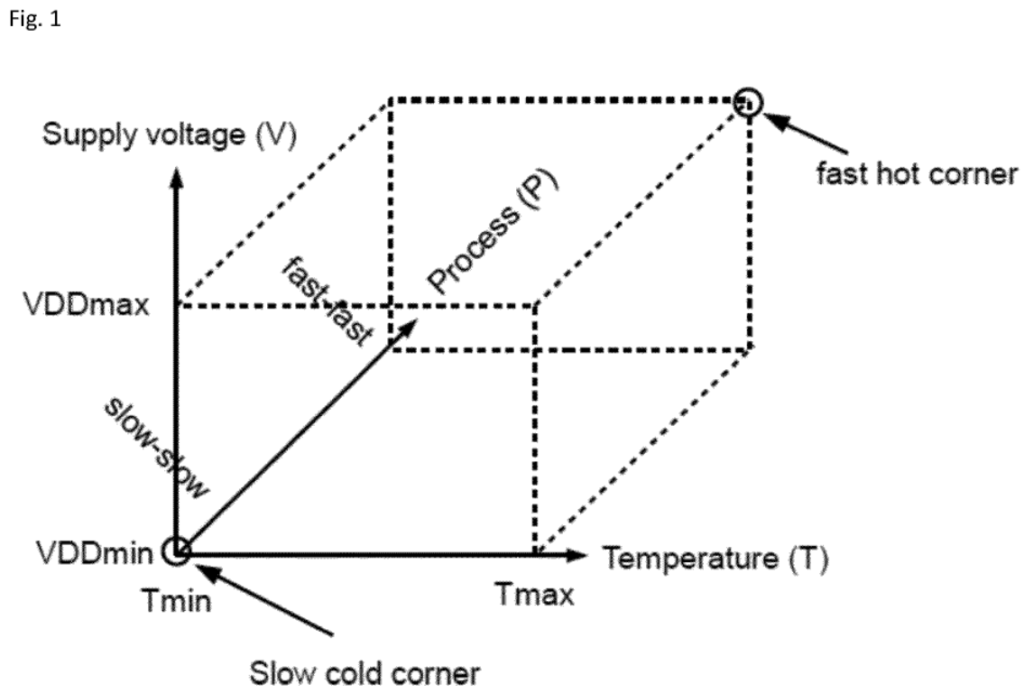This decision concerns the generation of a design model for a chip design using a simulation design tool. However, since the distinguishing features were considered non-technical in view of the most recent landmark decision G1/19 concerning computer-implemented inventions and simulations, the EPO refused grant. Here are the practical takeaways from the decision T 1768/20 (Characterization of standard cells/RACYICS) of July 3, 2023 of the Technical Board of Appeal 3.5.07.
Key takeaways
The invention
The subject-matter of the application is described in the Abstract of the originally filed specification as follows:
The invention discloses a method for an improved characterization of standard cells in a circuit design process. The object of the invention to provide a method for compiling library files, which are used for the design process of cells in digital circuits, whereas the adaptive body biasing (ABB) can be considered during the design process, will be solved by using simulation results of a cell set, which is defined by a fabrication process …

Fig. 1 of WO 2019/025030 A1
-
Claim 1 of the Main Request
Is it patentable?
The application underlying the present decision was rejected by the first instance Examining Division due to lack of inventive step for the following reasons:
4.1 The examining division considered that, even assuming that storing results in a library file implied the use of technical means, the method of claim 1 of the current main request lacked an inventive step for the following reasons: first, it was well known to store cell characterisation data in library computer files (see document D1, columns 17 and 18). Second, the further steps corresponded to non-technical user requirements that, according to the COMVIK approach (see decision T 641/00), were part of the objective technical problem (see contested decision, point 2).
Against this finding, the appellant argued as follows in its statement of grounds of appeal:
4.2 In its statement of grounds of appeal, pages 4 to 8, the appellant submitted that the method of claim 1 was not a mental act as such but rather used a design tool as technical means. The claimed method generated a design model with improved characterisation of a standard cell. The results of said characterisation were stored in a library file containing library corners or so-called PVT corners. These data were used in the simulation process of standard cells for highly integrated semiconductor components by the customers and were needed to simulate how a designed circuit might work later (see description, page 3, starting at line 16).
To support this line of argumentation, the appellant inter alia referred to the famous circuit simulation decision (T 1227/05) and to the well-know nuclear reactor simulation decision (T 0914/02):
Referring to decision T 1227/05, the appellant argued that the method had a technical character as it concerned the technical field of chip manufacturing. Since the method was implemented by design tools, this added to the technical character in view of decision T 914/02. A direct use of controllable natural forces was not necessary for an invention (see statement of grounds of appeal, page 5, first and second full paragraphs).
However, the Board in charge did not follow these arguments and found that T 1227/05 is no longer relevant. Instead, the findings of G1/19 are now to be considered:
4.4 The board considers that the cited decision T 1227/05, which concerned computer-implemented methods for the numerical simulation of electronic circuits, is no longer relevant to the present case in view of the more recent decision G 1/19, which reconsidered the general approach for assessing the technical character of computer-implemented methods for simulation and design (see point 133). Consequently, decision G 1/19 is the essential case law that has to be considered when assessing inventive step in the current case, and the board summarises some relevant aspects of this decision below.
In the following, the Board in charge mainly relied on the following quotation of G1/19:
Point 128 of decision G 1/19 summarised that calculated data “reflecting the physical behaviour of a system modelled in a computer usually cannot establish the technical character of an invention in accordance with the COMVIK approach, even if the calculated behaviour adequately reflects the behaviour of a real system underlying the simulation. Only in exceptional cases could such calculated effects be considered implied technical effects (for example, if the potential use of such data is limited to technical purposes, see point E.I.f above)”. Point E.I.f comprises points 97 and 98.
The Board noted that claim 1 would fail to specify a further use of the claimed library file including the simulation results (i.e., the improved design model), e.g., in terms of a manufacturing step, which could be an argument in favour of patentability:
4.5 The board considers that, in the current case, the result of the calculations effected by the method steps of claim 1 is a design model with an “improved” characterisation that is obtained by simulation (see characterising part of claim 1, for example) of a standard cell which is provided in a library file. Such a library file is, at least according to the description, used by customers in later stages of the overall design process (see description of the published application, page 5, lines 12 to 17 and page 10, lines 3 to 11), but the method of claim 1 does not contain steps specifying the use of the produced library file in later design or manufacturing steps. A use of the design model in a manufacturing step would have been particularly relevant since the Enlarged Board of Appeal considered the inclusion of a manufacturing step to be an argument in favour of patentability (see point 134 of decision G 1/19).
Against this background, the Board concluded that the claimed improved design (stored in the library filed) fails to provide a technical effect. Hence, the corresponding features were ignored for the assessment of inventive step according to the COMVIK appraoch:
4.5.2 Since the result of the method of claim 1 is calculated data for an improved design that is obtained using simulation, it follows from points 97, 98 and 138 of decision G 1/19 that the improved design does not contribute to inventive step since no “further” technical effect, such as controlling a machine in the foundry during a manufacturing process, is derivable.
With regard to the two additional auxiliary requests, the Board did not come to a different assessment.
As a result, the appeal was dismissed.
More information
You can read the full decision here: T 1768/20 (Characterization of standard cells/RACYICS) of July 3, 2023

Patrick is a European patent attorney at BARDEHLE PAGENBERG. He specializes in software patents in Europe both from a prosecution and litigation point of view.

